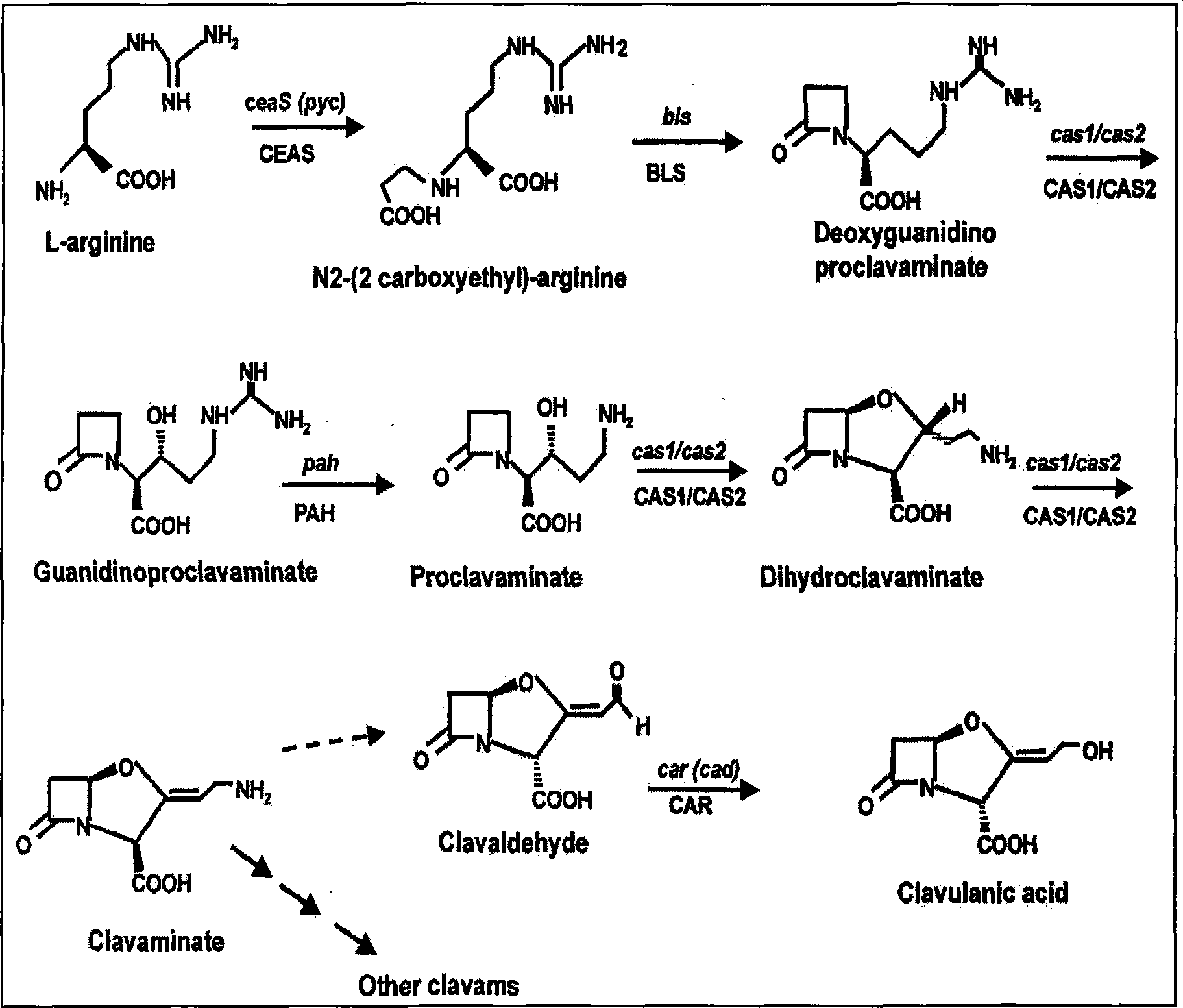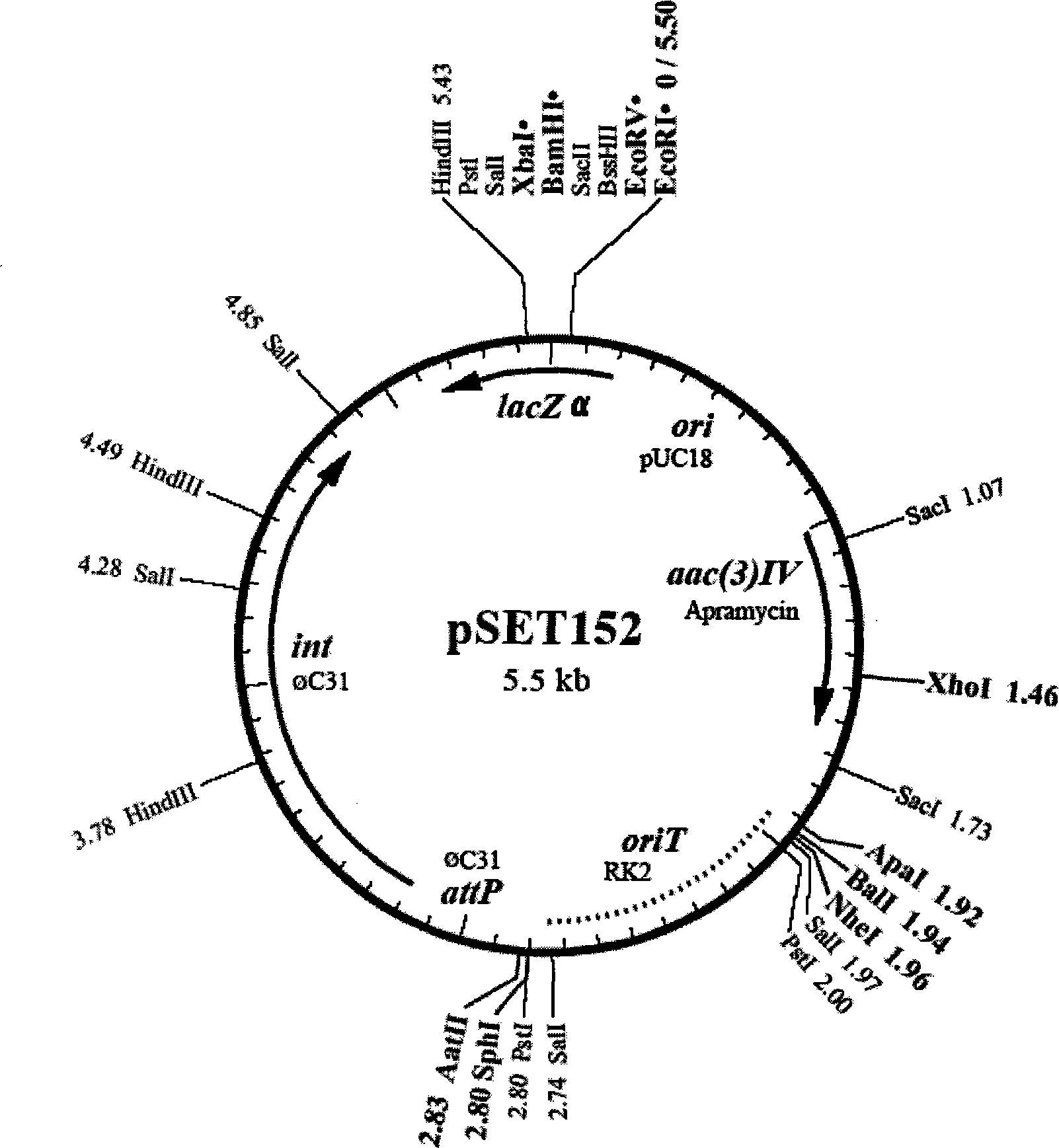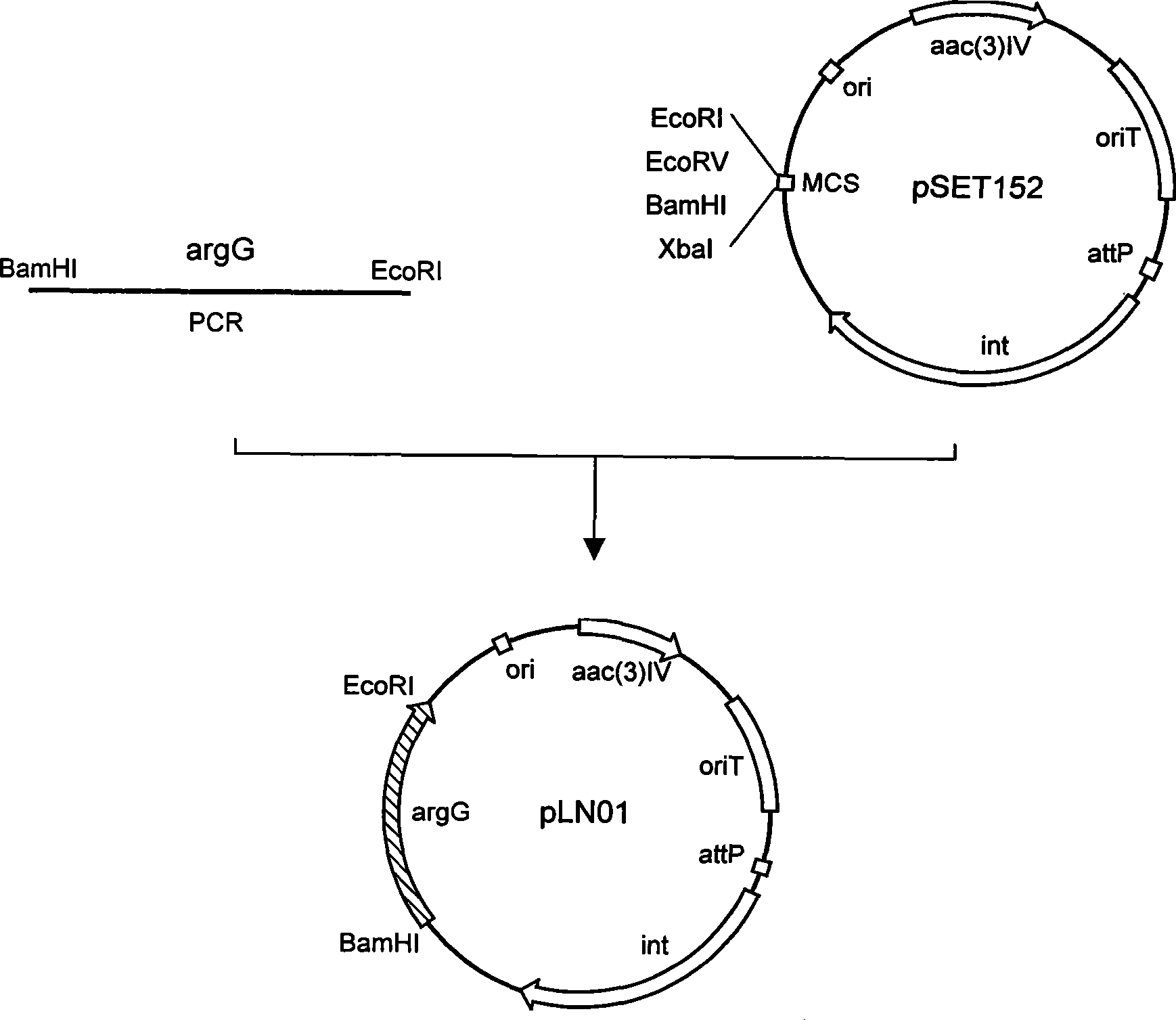Streptomyces clavuligerus, as well as preparation method and application thereof
A technology of Streptomyces clavulcane and strains, applied in the field of biopharmaceuticals, can solve the problems of low production of clavulanic acid and achieve the effects of short cycle, low work intensity and easy access
- Summary
- Abstract
- Description
- Claims
- Application Information
AI Technical Summary
Problems solved by technology
Method used
Image
Examples
Embodiment 1
[0032] Example 1 Construction of argG gene insertion vector
[0033] Design primers according to the DNA sequence of Streptomyces clavuligerus argG gene (Z49111), and use the total DNA of Streptomyces clavuligerus as a template to amplify argG gene fragments in vitro by PCR, and then purify the PCR products, and then electrophoresis detection (attached) Figure 4 ).
[0034] According to the analysis of the argG gene sequence of Streptomyces coryneformis, the two primers for PCR amplification of the argG gene are designed as follows:
[0035] argG-up: CGCGGATCCCGTAAGCGTCCGATCACTTCG
[0036] argG-down: CCGGAATTCGCTGCTCACTGCGGGAACT
[0037] The PCR product was digested with BamHI and EcoRI, and then inserted into the same double digested pSET152 plasmid (attached figure 2 In ), the positive clone was obtained by blue-white spot screening, the plasmid was extracted, and the double enzyme digestion with BamHI and EcoRI was performed to verify. The size of the double digestion product was d...
Embodiment 2
[0038] Example 2 Preparation of Streptomyces protoplasts
[0039] Protoplast screening of transformed strains
[0040] Add 100ml YEME+TSBY (1:1) into a 250ml Erlenmeyer flask equipped with a stainless steel spring, and add 0.2% glycine, inoculate 100ul of spore suspension, and cultivate for 36h-40h on a shaker at 30°C and 200rpm. Then the mycelium was collected, and the collected mycelium was washed with 10.3% sucrose solution for three times, and centrifuged at 3000 rpm for 10 min to collect the mycelium. Take the mycelium, add lysozyme P buffer, and incubate in a 30℃ water bath for 30-60 minutes until the supernatant is milky. Filter with a test tube equipped with absorbent cotton, transfer the filtrate to a sterile universal, and centrifuge at 3000 rpm for 7 minutes to collect the protoplast precipitate, which is yellow. Gently disperse the protoplasts, then wash with P buffer to remove lysozyme, centrifuge under the same conditions, collect the protoplasts, remove the superna...
Embodiment 3
[0043] Example 3 Shake flask detection of genetically engineered bacteria
[0044] Perform shake flask experiments on the selected engineering bacteria to test their ability to produce clavulanic acid. The original strain was used as the control strain, and soybean medium was selected as the fermentation medium. The amount of liquid in the shake flask was 1:10, the inoculum was 5%, cultured at 28°C, 250rpm, and samples were taken at different times to test the clavulanic acid content. . There are two replicates for each group of trials. The results of HPLC detection showed that compared with the original strain, the yield of Streptomyces clavuligerus LNSC-02 was greatly improved, and it increased by 20% at 72h (attached Figure 5 , Attached Image 6 ).
[0045] Table 1 HPLC detection of clavulanic acid content in fermentation broth
[0046]
PUM
 Login to View More
Login to View More Abstract
Description
Claims
Application Information
 Login to View More
Login to View More - R&D
- Intellectual Property
- Life Sciences
- Materials
- Tech Scout
- Unparalleled Data Quality
- Higher Quality Content
- 60% Fewer Hallucinations
Browse by: Latest US Patents, China's latest patents, Technical Efficacy Thesaurus, Application Domain, Technology Topic, Popular Technical Reports.
© 2025 PatSnap. All rights reserved.Legal|Privacy policy|Modern Slavery Act Transparency Statement|Sitemap|About US| Contact US: help@patsnap.com



